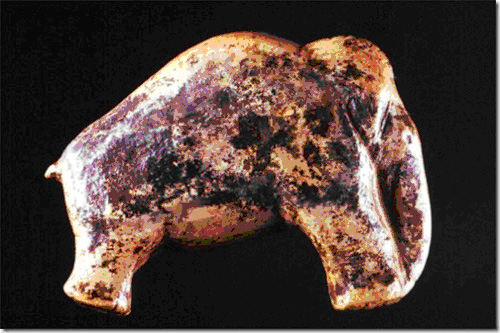 |
| Mammoths and Human Society Mammoths played an important
role for humans during the Pleistocene epoch,
1.8 million to 10,000 years ago. They provided the hunter/gatherers with
much-needed meat, skins, and building materials for their huts. As mammoths
were likely plentiful, with a population size of several million during
the early and mid Pleistocene, the impact of hunting is believed to have
been small during that period. On the other hand, human hunting may have
been an important factor during the final stages of the mammoths’ existence
in the late Pleistocene (20,000 to 10,000 years ago). Still, the impact
may not have been large, given the enormous amount of meat coming from
a 6 to 8 ton animal, which would have fed 400 people for several weeks.
Also, preservation of meat was not an issue for humans living in the ice
age, who had access to
natural forms of refrigeration.
Mammoths might therefore have played
a role in human survival similar to today’s farm animals. The appreciation
of the Stone Age people is reflected in many pieces of art, such as cave
paintings and ivory carvings. It might also explain why people living
today still care about mammoths.
The images below, provided by Nick Conard from Tübingen University,
are of artifacts on display at a Tübingen museum exhibit. They date
from the Aurignacian period (35,000 years ago), making them the earliest
examples of figurative art in Europe. For more information, see "Palaeolithic
ivory sculptures from southwestern Germany and the origins of figurative
art", by N. J. Conard, Nature 426, 830–832
(2003). |
|
Intact woolly
mammoth figurine from the Swabian Jura, a plateau in the state of Baden-Württemberg,
Germany. The figure is believed to have been made by modern humans some
35,000 years ago.
|
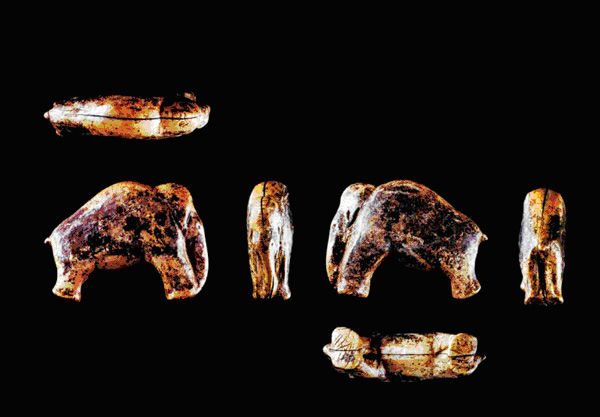 |
University
of Tübingen photographer H. Jensen |
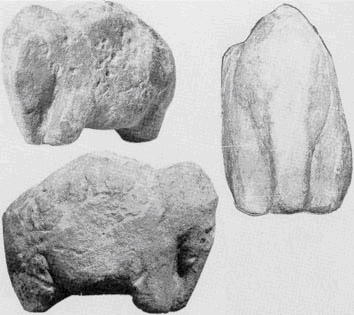 |
Mammoth
figurine no. 2, sandstone, from New Avdeevo. Photo: M. Gvozdover, 'Art
of the Mammoth Hunters'. |
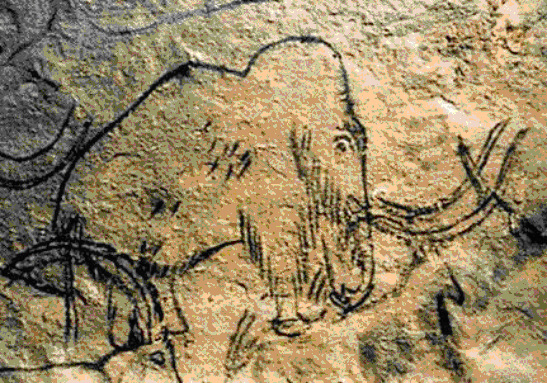 |
Mammoth
cave painting from Roufignac, France. |
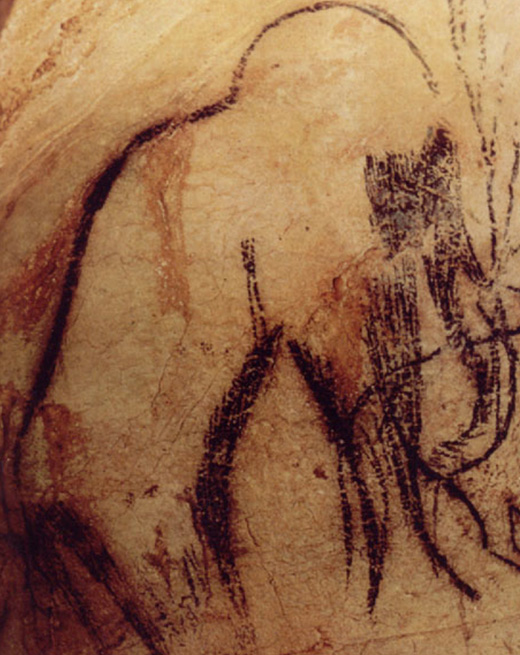 |
Source
unknown. (please contact us if you have further information) |
 |
